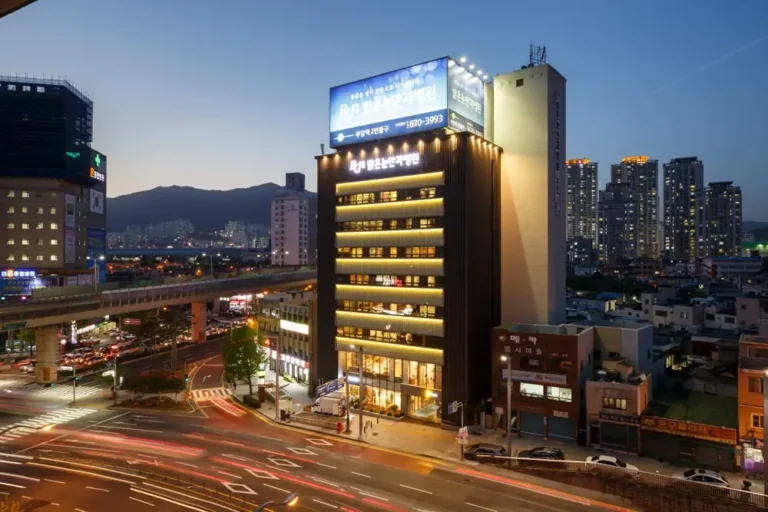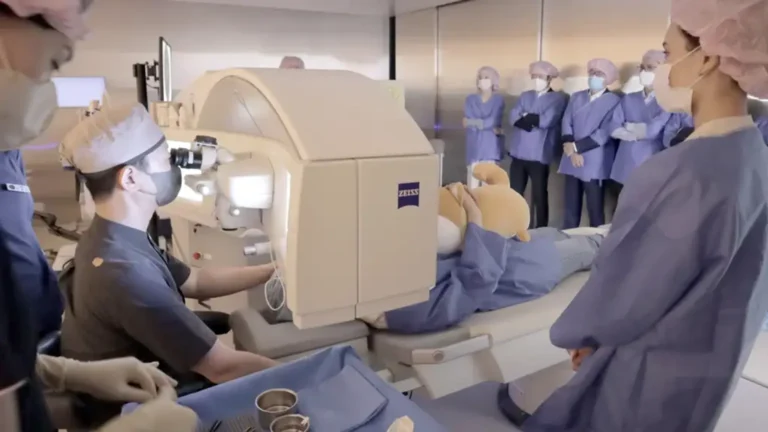LASEK (Laser-Assisted Sub-Epithelial Keratectomy) is a popular choice for vision correction among international patients, especially those who are not ideal candidates for LASIK due to thin corneas or dry eyes. South Korea has emerged as one of the top destinations for LASEK surgery thanks to its advanced technology, world-class ophthalmologists, affordable pricing, and medical tourism-friendly infrastructure.
But how do you plan your LASEK eye surgery trip to Korea smoothly and successfully as a foreign patient?
This comprehensive guide will walk you through everything you need to know before, during, and after your trip — from selecting a clinic to recovering comfortably in Korea.
✈️ Step 1: Start with Remote Consultation
Before booking flights, connect with a Korean eye clinic that offers free online or virtual consultations. Most reputable clinics provide:
- English-speaking coordinators
- A preliminary questionnaire and vision history form
- Options to upload your past eye prescriptions or reports
- A virtual Zoom consultation with an ophthalmologist
This step helps the clinic assess whether you’re a good candidate for LASEK and gives you personalized treatment expectations, cost estimates, and a proposed timeline.
What You’ll Need:
- Copy of your latest eye exam or glasses prescription
- History of any eye conditions (e.g., dry eye, keratoconus)
- List of medications or medical issues (e.g., diabetes, autoimmune diseases)
🏥 Step 2: Choose the Right Clinic in Korea
Not all clinics are the same — especially for international patients. Look for the following features:
✅ What to Look For:
- English-speaking medical staff or multilingual coordinators
- Board-certified ophthalmologists with LASEK specialization
- JCI (Joint Commission International) or KAHF (Korea Accreditation Program for Hospitals Serving Foreign Patients) accreditation
- Transparent pricing with no hidden costs
- Post-surgery support for international follow-up
Many clinics are located in Seoul’s Gangnam or Yeoksam districts, near hotels, subways, and medical centers.
💡 Tip: Ask if the clinic offers travel packages, including airport pickup, hotel discounts, or local concierge services.
📅 Step 3: Set Your Travel Dates (Stay 6–10 Days)
Though the LASEK procedure takes less than an hour, the recovery process is slower than LASIK. That’s why international patients should plan to stay in Korea for 6 to 10 days.
| Day | What Happens |
|---|---|
| Day 0 | Pre-op tests, consultation, and same-day surgery |
| Day 1–3 | Light sensitivity, blurry vision, rest required |
| Day 4–5 | Bandage lens removal + vision starts to clear |
| Day 6–7 | Follow-up exam, ready to return home |
Stay longer if:
- You have a high prescription (over -6.00)
- You have dry eyes or are over age 40
- You want to combine your trip with sightseeing or recovery spa time
🏨 Step 4: Book Recovery-Friendly Accommodation
Choose lodging near your clinic so you can walk or take short taxi rides. Many foreign-friendly accommodations near medical districts offer:
- Quiet rooms with blackout curtains
- Air purifiers and humidifiers
- On-site multilingual staff
- Proximity to convenience stores and cafes
- Complimentary breakfast (helpful when resting in-room)
Alternatively, opt for a medical tourism guesthouse or recovery center, which may offer:
- Meal service
- Post-op nursing support
- Shuttle service to your clinic
💳 Step 5: Understand the Costs and Payment Options
One major reason patients choose Korea is affordability. LASEK surgery typically costs:
- ₩2,000,000 – ₩3,800,000 KRW (USD $1,500–$3,000) for both eyes
- Includes pre-op tests, surgery, bandage lenses, and post-op care
- Optional add-ons: Eye drops, vision-enhancing laser upgrades, medications
Payment Tips:
- Most clinics accept Visa, MasterCard, or international wire transfer
- Some offer financing or installment options for longer stays
- Check for VAT refund eligibility if you’re traveling solely for medical purposes
Ask for a full itemized quote before traveling, and clarify what’s included.
🧳 Step 6: What to Pack for LASEK Recovery
Pack smart for both comfort and healing:
| Item | Reason |
|---|---|
| UV-protection sunglasses 🕶️ | Essential for light sensitivity after surgery |
| Artificial tears & lubricating drops 💧 | Some will be provided, but bring extra |
| Pain relief medication 💊 | Clinics may offer prescriptions, but bring OTC meds |
| Travel neck pillow 🛏️ | Helps avoid pressure on the eyes during rest |
| Eye mask or blackout curtains 🌒 | Useful for light sensitivity in hotel rooms |
| Loose clothing 👕 | Avoid anything that requires pulling over your head |
Avoid bringing:
- Makeup (can’t be used for 1–2 weeks post-op)
- Contact lenses (not needed after LASEK!)
🏞️ Step 7: Plan Gentle Activities While in Korea
Most patients experience blurry vision for 3–5 days, but you can enjoy some light sightseeing after Day 4. Choose low-stimulation activities:
- Han River cruises (indoors, seated, relaxing)
- Korean spa (jjimjilbang) for body rest (avoid pools and saunas)
- Traditional tea houses or cafes
- Visiting palaces or museums in shaded areas
- K-beauty stores for post-surgery skincare
Avoid:
- Bright lights or direct sunlight
- Dusty or crowded street markets
- Intense hiking or water activities
📲 Step 8: Post-Surgery Follow-Up and Return Home
Before flying home, your clinic will:
- Remove the bandage lens (usually Day 4–6)
- Check corneal healing and visual acuity
- Provide a written post-op care guide in your language
- Share eye drop instructions and return-to-work timeline
- Offer remote follow-up options (Zoom, email, WhatsApp)
🛫 Most patients are safe to fly 5–7 days after surgery, but your clinic will give the final clearance.
🌍 Step 9: Continue Recovery at Home
Once back in your country:
- Avoid eye strain (reading, phone use) for the first 1–2 weeks
- Don’t rub your eyes or wear makeup for 10–14 days
- Wear sunglasses outdoors for a month
- Use lubricating drops daily
- Schedule a check-up with your local eye doctor after 4–6 weeks
If any issues arise, contact your Korean clinic. Most offer ongoing email and phone support.
✅ Final Checklist for Planning Your LASEK Trip in Korea
| Task | Status |
|---|---|
| Online consultation completed ✅ | |
| Clinic selected with English staff ✅ | |
| Travel booked (6–10 days stay) ✅ | |
| Accommodation near clinic reserved ✅ | |
| Visa and passport ready ✅ | |
| Budget planned (₩2M–₩4M KRW) ✅ | |
| Packing list prepared ✅ | |
| Follow-up plan arranged ✅ |
✨ Ready to Begin?
Korea offers everything you need for a safe, affordable, and stress-free LASEK experience — even as an international patient. From top-tier technology to warm hospitality and global-standard care, it’s no wonder that more and more people are choosing Korea for their vision correction journey.




